Need For Speed: The Run – Review
by Ric
|
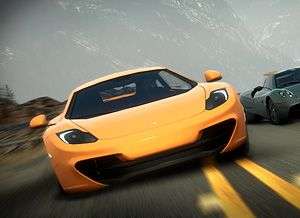 I have to say, I admire EA quite a lot. They were once seen as some kind of horrible game producing monster that threw out the same game every year because they knew they’d make money, but in recent years they’ve taken steps to make sure that their games are quality, and that they’re trying new things. Sometimes it pays off; games like Dead Space and Mirror’s Edge are shining examples of what they can do when they let the developers go wild and try new ideas. And then other times, the whole thing can fall flat on its face – Army of Two springs to mind for some reason. That hasn’t stopped them from carrying on their experimenting, and now we have an interesting take on a classic series, Need For Speed: The Run.
I have to say, I admire EA quite a lot. They were once seen as some kind of horrible game producing monster that threw out the same game every year because they knew they’d make money, but in recent years they’ve taken steps to make sure that their games are quality, and that they’re trying new things. Sometimes it pays off; games like Dead Space and Mirror’s Edge are shining examples of what they can do when they let the developers go wild and try new ideas. And then other times, the whole thing can fall flat on its face – Army of Two springs to mind for some reason. That hasn’t stopped them from carrying on their experimenting, and now we have an interesting take on a classic series, Need For Speed: The Run.
This time around, EA Black Box (who handled the series up until Undercover) have been brought back, and they’ve gone for a Hollywood blockbuster feel. So we’re getting explosive set pieces, a gripping storyline and some pacy, exciting races? Not quite…
The story kicks off well; our main man, Jack, portrayed as one of the greatest racers ever, wakes up in a car crusher and has to break out before jacking a car and escaping the Mafia. The opening chase is fairly exciting, complete with explosions, gunfire, and a section where you have to cross some train tracks before a passing locomotive slams into the side of you. It turns out that ol’ Jack has gone and got himself into some financial trouble with the mob and they want him dead. Luckily, his rather attractive female business partner, Sam has just the thing: a race from Los Angeles to New York, with $25 million going to the winner.
It’s here where the story essentially stops and makes way for the driving. Most of the cut-scenes from this point on are just Sam yelling at Jack to drive faster, and the story progresses in a very linear fashion, with no twists or turns or major disruptions to keep things interesting. I won’t spoil the ending, but it doesn’t take a genius to work out what happens. The characters are also pretty one-dimensional. A loading screen tells us that Jack is a cocky and arrogant racer, but he’s never shown as particularly cocky or arrogant whilst racing. As previously mentioned, Sam does little more than berate Jack for not being in first place at all times, and so her character is never developed at all, and their relationship is never discussed.
There are times in the game where ‘rivals’ are introduced, but other than one cut-scene of the two female rivals feeling each other up in front of Jack, clearly thrown in to appease the adolescent male audience, we’re never given more back-story on them other than a simple loading screen giving a brief reason as to why they’re in the race. It feels like Black Box really missed a trick here; after all, what is a story without its characters?
 Enough about the story (such as it is); Need for Speed has always been about one thing: racing. The Run itself is split into ten stages, with each stage cut up into smaller events. There are three types of event on offer: Overtake, which is essentially just a straight sprint to the finish against a varying number of opponents; Make Up Time, a timed checkpoint event done on your lonesome; Battle, where you have a one on one with an opponent and have to maintain a lead to avoid being eliminated there and then. Black Box also try to distinguish ‘rival’ events as a different kind of event, but these are essentially just the Overtake event with even fewer opponents.
Enough about the story (such as it is); Need for Speed has always been about one thing: racing. The Run itself is split into ten stages, with each stage cut up into smaller events. There are three types of event on offer: Overtake, which is essentially just a straight sprint to the finish against a varying number of opponents; Make Up Time, a timed checkpoint event done on your lonesome; Battle, where you have a one on one with an opponent and have to maintain a lead to avoid being eliminated there and then. Black Box also try to distinguish ‘rival’ events as a different kind of event, but these are essentially just the Overtake event with even fewer opponents.
The game manages to mix up these event types enough to keep things interesting, but it’s the environments themselves that prevent the races from being truly exciting. As you might imagine, a coast-to-coast race of America is going to use many motorways (or ‘interstates’ and ‘freeways’), and so you’ll spend what feels like an inordinate amount of time driving in what is effectively a straight line, with the only real issue being the traffic. That isn’t to say that all races are like this, however. Many of the races early on and in the middle game take place in mountain regions, so you can expect plenty of twists and turns in the road, making for some tense races as you battle to not get shoved off the edge of a cliff. Sadly, the latter end of the game reverts back to freeways for the most part, and so what should be an exciting build up to an explosive climax is reduced to tiny adjustments to thread through traffic. It makes sense, since you’re less likely to have a route that goes into ridiculous detours through mountains if you were doing this race for real, but in terms of game design, it isn’t all that enjoyable.
Obviously the races aren’t just self-contained events, and do have an overall purpose for The Run. Your time for each event is stored and added to your overall Run time, which you can compare with your friends and enemies on Autolog (making a welcome return here). You rise in rank after each event, but since you need to win every event, progression seems arbitrary and slightly pointless. To deal with crashes setting your time back, Black Box have added a checkpoint function in each event. When you do something catastrophic, like slam your car into oncoming traffic, you’re sent back to the last checkpoint and into your recorded position and total event time for when you passed that checkpoint. There is actually a decent amount of checkpoints per race, ensuring you won’t be thrown too far back, and to add a bit more challenge, you’re only given a set number of times you can reset, which changes between difficulties.
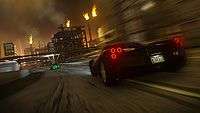 |
 |
 |
 |
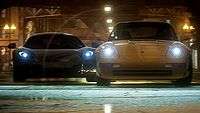 |
 |
The problem, however, is that the game is a little too sensitive as to when it decides to reset to a checkpoint. Obviously if you destroy your car or don’t make a checkpoint in time, you’re going to reset, but stray just a little too far off the edge of the road and suddenly you’ll be down a reset and back at the last checkpoint before you can so much as think about correcting your mistake. It’s a gravely unforgiving system, and the boundaries change wildly between tracks, so your best bet is to stick to the asphalt like glue, which is never easy when you’re drifting around a corner at 180MPH.
The worst part about resetting, or even retrying the whole event, is the load screens. Dependent on how far away you were from your last checkpoint, a reset can take up to around ten seconds, which doesn’t sound like much, but when you compare it to that fact that an event often only lasts about two minutes, it’s actually a fairly sizeable chunk of time. Retrying an event takes even longer, and the load screens aren’t particularly interesting to look at, so you’ll probably end up rage quitting on more than one occasion, just because you can’t face the agonizingly long loading time. Overall the checkpoint system does make perfect sense, but until you get used to it, it can be ridiculously frustrating.
 One thing that stood out from the initial previews and videos about The Run was the inclusion of the dreaded quick-time events. When I first saw these in the footage, my initial reaction was one of disgust and confusion; how could this possibly work in a racing game? Thankfully, there are very few quick-time events actually in the game, and the ones that are present are often quite fun and intense, and never drag on for too long or intrude too heavily in the overall gameplay.
One thing that stood out from the initial previews and videos about The Run was the inclusion of the dreaded quick-time events. When I first saw these in the footage, my initial reaction was one of disgust and confusion; how could this possibly work in a racing game? Thankfully, there are very few quick-time events actually in the game, and the ones that are present are often quite fun and intense, and never drag on for too long or intrude too heavily in the overall gameplay.
I feel I should touch on The Run’s use of ‘rubber banding’, a practice used by developers to provide artificial competition with opponents by making them catch up to you even when it’s not feasible. I rarely noticed this happening with other racers, but there are times when you’re being chased by the police or the mob, and it’s then that the game decides to let them catch up to your car (which is currently travelling at around 200MPH) out of nowhere to take a crack at you. Combine that with the fact that the mob have guns and will shoot at you constantly until you explode, and it builds into a fairly frustrating experience.
Despite the problems, I’d just like to clarify that when the game works it is a lot of fun. Blasting through heavily populated roads at super high speeds is a barrel of laughs, and some of the set-pieces, while few and far between, are genuinely brilliant. If you can ignore some of the more frustrating areas of the game – or just don’t suck at it – you’ll find a pretty enjoyable campaign mode waiting for you.
Of course, this wouldn’t be a Need for Speed game if it weren’t for a hefty collection of licensed cars and The Run doesn’t disappoint. In the main storyline you’re automatically given access to the Tier 4 cars, which are the second fastest collection of cars, and there’s a fine selection of muscle, sports and tuner cars available for you to drive. You can switch cars midway through stages at gas stations, which occasionally come up on the side of the road, but I found myself picking one car and sticking with it for most of my time. Still, it’s nice to know that you have the choice to experiment, and if you hate your initial choice after a while, you can swap it out for something a little more to your taste. The cars all handle very well and with enough difference between them that they feel interesting and varied, which is definitely a good thing.
The story mode doesn’t technically take too long to get through; my own Run time came in at around two hours on Normal difficulty, although in actual time it was probably around double that due to resetting and reloading. Once you beat the story mode you can go back and give Extreme difficulty a bash, but only if you’re either masochistic or very, very good at the game. My personal experience had me retrying the third event again and again with no success, so I decided to abandon all hope. Once you’re done with the story you can take on the challenges you’ll have unlocked from completing stages. These are essentially just self-contained events that allow you to win medals and unlock new cars for use in the campaign or online, but the first few challenges are in the bottom tier of cars, meaning that after being so used to blasting around at breakneck speeds, you may find the challenges somewhat dull and slow, given the worse nature of the cars.
As previously mentioned, Autolog makes a comeback, this time complete with a levelling system, allowing you to unlock new profile pictures and backgrounds for your online profile. One of the more curious features of the levelling system is that you have to level up to unlock features such as boost, drifting, and charging boost through dangerous driving. It’s strange that Black Box decided to separate the features in this way, as it prevents the player from being able to have access to all their boost until they reach level 9 which, for me, occurred about halfway through the campaign (thankfully you do level up in single player).
 You can see your friends’ times compared to you for each stage on The Run and, naturally, you get Autolog Recommends challenges, should your friends manage to get a better time than you on a stage or challenge event. Interestingly, Black Box have decided to tie in car unlocks with Autolog Recommends, so you can only unlock certain cars if you beat the challenges. This is great if you’ve got a bunch of friends who also play The Run, but if you’re a loner like me it means you could miss out on some tasty vehicles. Thankfully, Autolog sees fit to recommend that you go back and try and beat your own times on occasion, meaning you are still able to get those cars, just with a little more effort on your account.
You can see your friends’ times compared to you for each stage on The Run and, naturally, you get Autolog Recommends challenges, should your friends manage to get a better time than you on a stage or challenge event. Interestingly, Black Box have decided to tie in car unlocks with Autolog Recommends, so you can only unlock certain cars if you beat the challenges. This is great if you’ve got a bunch of friends who also play The Run, but if you’re a loner like me it means you could miss out on some tasty vehicles. Thankfully, Autolog sees fit to recommend that you go back and try and beat your own times on occasion, meaning you are still able to get those cars, just with a little more effort on your account.
Perhaps the greatest thing about Need for Speed: The Run is the graphics. Running on the Frostbite 2 engine, the game looks absolutely stunning. While the tracks may not be particularly varied, the environments they’re in are, and you’ll see some beautiful mountain ranges, well-crafted city streets that look great lit up at night, and so much more. One thing that Frostbite 2 does brilliantly is lighting, and since you’ll be racing both during the day and at night, you get the full spectrum of lighting to show off the glorious environments. Even the character models look impressive, which is something you wouldn’t expect from a racing game. The opening cut-scene provides a close up on Jack’s face that allows you to count all the hairs on his chin in great detail, and even the side characters each look varied and interesting. The cars also look fantastic and you may find yourself screwing around in the photo mode just to enjoy the wonderful work that has gone into crafting them. My only slight niggle is that the damage is very much “go big or go home”; you never see much minor damage, such as scratches and scrapes, but slam into a couple of other cars and you finally get to see the damage models at work. It’s a very minor fault in what is otherwise a beautiful game.
The sound in The Run is both good and bad. The soundtrack itself is pretty good, with the original score fitting in well with the tense atmosphere and some of the licensed tracks are well placed and get you in a driving mood. However, each event has a song or score attached to it, so if you hate the music and then find yourself failing and retrying an event several times, as I did early on, it can make the thought of trying that track again hellish. You can, however, turn the soundtrack down and focus more on the cars instead (which all sound different and wonderful in their own right), but the issue here is that you can’t just turn the music off, meaning that while you’ll have the roar of the engine blaring out at you, you can still hear the music playing at a level that just creeps into annoying. I left the audio at a ‘film experience mix’ for much of my time, and it worked out fairly well, so I would recommend that.
Naturally, The Run features an online multiplayer for you to get your greasy mitts on, and this is actually a lot of fun. You choose from a variety of playlists that have different selections of tracks (all taken from events in the campaign) for you to vote on, each with their own vehicle restrictions and rules, and then have a series of races to see who gets crowned the winner. You win rewards and bonus XP based on certain criteria, a lot like in Battlefield 3, and there’s even a ‘bonus wheel’ feature that grants the top three racers in a session an exciting and rare reward, such as a hefty XP boost or even a new car. Lag can sometimes be an issue when everyone’s grouped up, but it never gets so bad that the game is unplayable. All in all, the multiplayer feels well thought out and is enjoyable to play.
Pros- Looks absolutely stunning
- Story mode is an interesting concept
- Multiplayer can be a lot of fun
- Infuriating checkpoint system and hideous load times
- Flat story and one dimensional characters
- Short campaign with uninteresting challenges to back it up
At the end of the day, Need for Speed is an interesting take on the racing genre. It tries some new things that don’t really pay off, such as the narrative-led racing and a poor checkpoint system, but when it works and you finally gel with the game, there’s a great deal of fun to be had. Combine that with some wonderful graphics and you have a game that had the potential to be great, but unfortunately fell just short of the mark and ended up as merely 'good'. Nice try, EA, but it’s just not quite there.
Last five articles by Ric
- Playing Rhiannon, With Rhiannon
- The Hidden Controversies of 2015
- Best of 2015: Tell No Tales
- Best of 2015: A Good Walk Spoiled By John
- Best of 2015: My Summer As A Drug Dealer


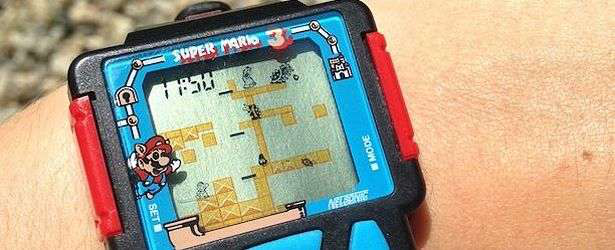













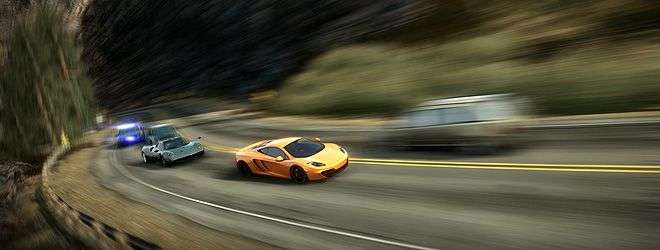







Shame it wasn’t as amazing as Hot Pursuit, but then I respect EA for making a risk and essentially trying to create a blockbuster film within a game. Still, I can’t help but worry they’re going to oversaturate Need for Speed again, what with The Run being the third NFS title in a year. Even if each title is being developed by a different studio, that’s creeping very slowly and surely into Guitar Hero territory, and that’s worrying.
Still, it’s a great review, Ric, and based on what you’ve said I think I’ll give it a miss purely because the campaign is too short to justify me investing in it.